Assam
Assam is a state in northeast India, situated south of the eastern Himalayas along the Brahmaputra and Barak River valleys. Assam covers an area of 78,438 km2 (30,285 sq mi). The state is bordered by Bhutan and Arunachal Pradesh to the north Nagaland and Manipur to the east Meghalaya, Tripura, Mizoram and Bangladesh to the south and West Bengal to the west via the Siliguri Corridor, a 22 kilometres (14 mi) strip of land that connects the state to the rest of India.
Assam is known for Assam tea and Assam silk. The state was the first in Asia, where oil was drilled. Assam has conserved the one-horned Indian rhinoceros from near extinction, along with the wild water buffalo, pygmy hog, tiger and various species of Asiatic birds, and provides one of the last wild habitats for the Asian elephant. The Assamese economy is aided by wildlife tourism to Kaziranga National Park and Manas National Park, which are World Heritage Sites. Sal tree forests are found in the state which, as a result of abundant rainfall, look green all year round. Assam receives more rainfall than most parts of India this rain feeds the Brahmaputra River, whose tributaries and oxbow lakes provide the region with a hydro-geomorphic environment.
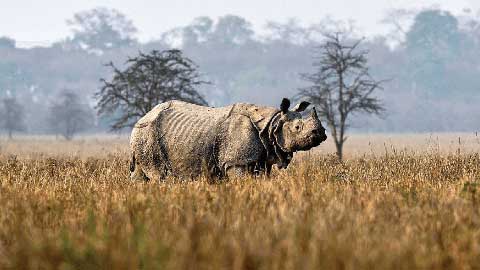
History Of Assam
The government of India, which has the unilateral powers to change the borders of a state, divided Assam into several states beginning in 1970 within the borders of what was then Assam. In 1963, the Naga Hills district became the 16th state of India under the name of Nagaland. Part of Tuensang was added to Nagaland. In 1970, in response to the demands of the Khasi, Jaintia and Garo people of the Meghalaya Plateau, the districts embracing the Khasi Hills, Jaintia Hills, and Garo Hills were formed into an autonomous state within Assam in 1972 this became a separate state under the name of Meghalaya. In 1972, Arunachal Pradesh (the North East Frontier Agency) and Mizoram (from the Mizo Hills in the south) were separated from Assam as union territories both became states in 1986.
The post 1970s experienced the growth of armed separatist groups such as the United Liberation Front of Asom (ULFA) and the National Democratic Front of Bodoland (NDFB). In November 1990, the Government of India deployed the Indian army, after which low-intensity military conflicts and political homicides have been continuing for more than a decade. In recent times, ethnically based militant groups have grown. Panchayati Raj Institutions have been applied in Assam, after agitation of the communities due to the sluggish rate of development and general apathy of successive state governments towards Indigenous Assamese communities.
Top Places to Visit In Assam
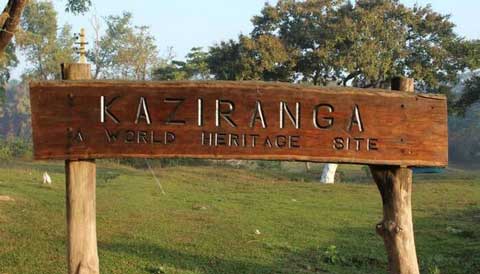 Kaziranga National Park
Kaziranga National Park
The Kaziranga National Park is home to two-thirds of the planet’s population of the one-horned rhinoceros. Apart from that, this national park is also a World Heritage Site and a major highlight on the Assam tourist places map. It’s vibrant, well preserved, sustained ecology, and a versatile biodiversity is what contribute to keeping this place on the top of the list of tourist places in Assam. Other than the one-horned Rhino, the park draws its popularity from other pleasant surprises like the Swamp Deer, Elephants, Wild Buffalos, Chinese Pangolins, Bengal Foxes, Gibbons, Civets, Sloth Bears, Leopards, and Flying Squirrels to name a few. It’s also a tiger reserve since it houses an enormous population of the royal Bengal Tigers, making it one of the most important Assam points of interest.
 Manas National Park
Manas National Park
Manas National Park is a UNESCO Natural World Heritage site, a Project Tiger Reserve, an Elephant Reserve, a Biosphere Reserve all in one, and the best tourist place in Assam! Being famous for the rare golden langur and the adorable red panda, Manas is one of the best national parks in India for those who wish to witness the rare species of India’s flora. It’s one of the best tourist attractions in Assam owing to not only its rich biodiversity but also for its stunning scenery and surreal natural landscape ranging from forested hills, alluvial grasslands, and tropical evergreen forests. Home to India’s second-largest tiger population, it harbours the maximum population of endangered Indian species as listed in the IUCN Red Book.
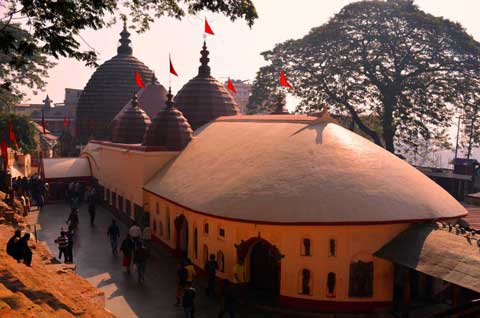 Kamakhya Temple
Kamakhya Temple
One of the 51 Shakti Peeths in India, the Kamakhya Temple carries a myth to protect devotees from evil eyes. It’s one of the most popular and famous tourist places in Assam for pilgrims and tourists alike owing to its amazing Tantric adoration. Located atop Nilachal Hills, this temple’s main deity is Lord Shiva and Daksha Yagna (Death Incarnation).
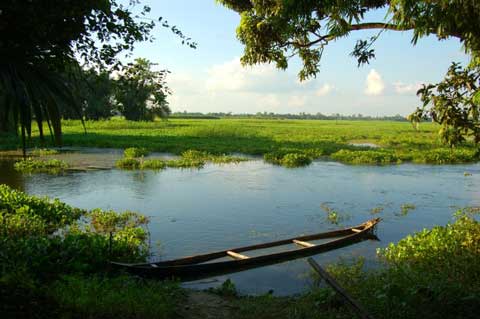 Majuli Island
Majuli Island
Majuli’s eye-warming naturescapes make it one of the top tourist places in Assam. It is the world’s largest riverine island as well as one of the most important Satras established by Sankardeva and Madhavdev. The Majuli islands are spread over an area of around 452 sq km and most of these get submerged under water during the monsoons, leaving the bigger islands like Kamalabari, Auniati, and Garamur on the surface. Apart from having remarkable natural beauty, Majuli is also a birdwatcher’s paradise. A holiday in Assam is incomplete without seeing one of the most beautiful places to visit in Assam.
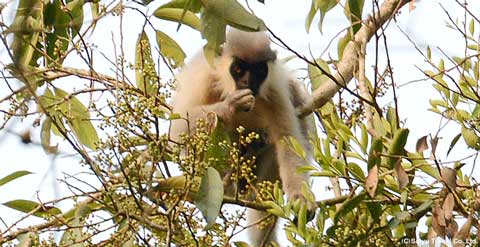 Hoollongapar Gibbon Wildlife Sanctuary
Hoollongapar Gibbon Wildlife Sanctuary
Located less than 20 km from Jorhat city center, Gibbon Wildlife Sanctuary is a haven for Assam’s Hoolock Gibbon population. Surrounded by the Brahmaputra river on one side and tea gardens on all others, this wildlife sanctuary is among the best spectacles of Assam sightseeing for wildlife lovers and nature seekers. Other than over 40 species of Hoolock Gibbons, this enclosure houses Capped Langur, Stump-Tailed Macaque, Pigtail Macaque, Assamese Macaque, Rhesus Macaque, Slow Loris, Elephants, and so many more species of animals.
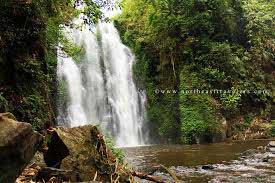 Kakochang Waterfalls
Kakochang Waterfalls
Cascading down furiously between the rubber and coffee plantations of Jorhat, the Kakochang Waterfalls are a magnificent wonder of nature. The main waterfall is located 13 km from the Bokakhat in Jorhat and attracts tourists in great numbers year round. Apart from providing a refreshing retreat and a great subject for shutterbugs, this waterfall gives splendid views of the ruins of Numaligarh and lush green tea plantations. Located close to the Kaziranga National Park, Kakochang is among the must visit Assam points of interest.
 Tocklai Tea Research Centre
Tocklai Tea Research Centre
Established in 1911, the Tocklai Tea Research Centre is among the largest and oldest tea research stations in the world. All the scientific knowledge that the world holds about tea, has come from this center in Assam. Various researches on the extraction, cultivation, and processing of tea are conducted here day after day in order to enhance tea’s nutritional value. The center is among the best places to visit in Assam owing to its regular tea processing tours and tasting tours it holds for visitors.
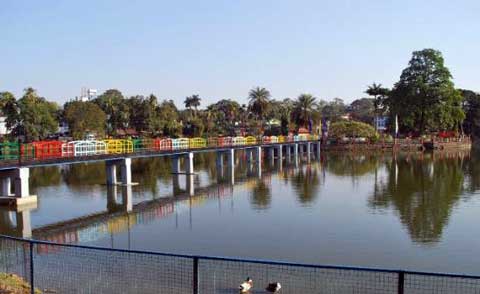 Padam Pukhuri
Padam Pukhuri
Hazara Pukhuri and Padam Pukhuri are a pair of tanks positioned in the vicinity of the Bamuni Hills. While Hazara Pukhuri is recognized as the third largest artificial lake in Tezpur, the Padam Pukhuri is an island park famous for lotuses. Created from an archaeological excavation in the early 19th century, this pond contributes to the cool and breezy atmosphere of the city and is among the most popular historical places of Assam.
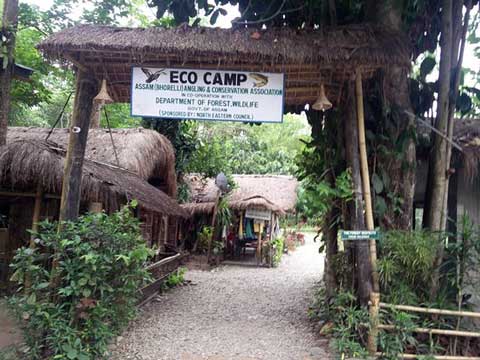 Nameri National Park
Nameri National Park
Famous for its royal Bengal Tigers, Elephants, and other animals including Leopards, Gaurs, Wild Pigs, Sambars, and more, the Nameri National Park is among the most adventure-packed Assam places to visit for thrill seekers and wildlife fanatics. Apart from its fauna, Nameri also has a large population of avifauna which makes it a bird watcher’s paradise. One of the best things to do in Assam while in the Nameri Sanctuary is to embark on a dauntless safari down its lush thickets and dirt tracks.